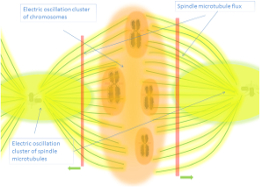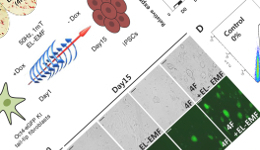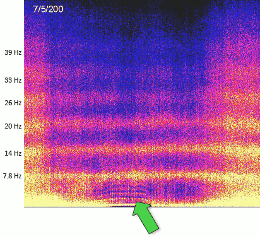

ELF-EMF Hazards Reviews
The wide spectra of symptoms after no-ionizing exposition to low frequencies is reviewed
Extremely low-frequency electromagnetic fields (ELF-EMFs) continue to be a subject of scientific investigation, with diverse reviews examining their impacts across biological systems and ecological contexts. This section integrates insights from various reviews, focusing on cellular, neurological, reproductive, and ecological outcomes, as well as emerging patterns in research methodology and regulatory implications. ...
Findings emphasize the multifactorial nature of ELF-EMF effects, revealing complex interactions dependent on exposure parameters and underlying biological conditions. Recommendations for future research and policy adjustments are discussed.
ELF-EMFs, arising primarily from power lines, electronic devices, and industrial activities, have spurred extensive research due to their pervasive presence and potential health implications. This section consolidates findings from major reviews, elucidating key effects while identifying gaps in understanding and opportunities for advancements in both research and policy.
Cellular and Molecular Effects:
Response to Exposure Parameters:
A scoping review by López de Mingo et al. (2024) examined 79 studies and highlighted that cellular responses to ELF-EMFs depend on frequency, intensity, exposure time, and waveform. Non-linear relationships were observed, where increased exposure duration did not always correlate with heightened effects.
Key cellular outcomes included oxidative stress, apoptosis, and disruptions in the cell cycle, suggesting that cells interpret electromagnetic signals through complex, parameter-specific mechanisms.
Free Radical Generation and DNA Integrity:
Lai (2019) emphasized the role of ELF-EMFs in inducing free radicals and potential DNA damage. The review consolidated evidence of oxidative stress as a central mediator of ELF-EMF biological effects, with implications for aging and disease progression.
Neurological and Behavioral Impacts:
Cognitive and Neurodegenerative Outcomes:
Mattsson and Simko (2012) linked ELF-EMF exposure to neuroinflammation and neurodegenerative diseases, proposing that inflammation pathways mediate long-term neural effects. Findings suggest potential links to Alzheimer’s disease, though evidence remains inconclusive for direct causality.
Sleep Disturbances:
Ohayon et al. (2019) highlighted sleep disruptions associated with ELF-EMF exposure. Altered melatonin production and disturbed circadian rhythms emerged as central mechanisms, with downstream effects on cognitive and metabolic health.
Reproductive Health and Development:
Pregnancy and Miscarriage Risks:
A review by Ebadi et al. (2020) identified significant associations between ELF-EMF exposure and increased miscarriage risk. High magnetic field exposures (e.g., 16 mG) were linked to a 2.72-fold increase in miscarriage likelihood, raising concerns about regulatory thresholds for prenatal environments.
Fertility and Hormonal Effects:
Exposure during critical developmental windows impacted gametogenesis and hormonal balance, with cumulative exposures leading to long-term reproductive deficits.
Ecological and Environmental Perspectives:
Wildlife and Biodiversity:
Belova and Acosta-Avalos (2015) documented disruptions in magnetic alignment behaviors among cows and deer near high-voltage power lines, suggesting ELF-EMFs interfere with geomagnetic navigation systems.
Reduced pollination efficiency in bees and altered plant growth patterns further underscored ELF-EMF’s ecological reach.
Environmental Field Interactions:
Panagopoulos (2013) explored electromagnetic interactions between environmental fields and living systems, proposing that ELF-EMFs alter organismal energy balance and stress responses.
Emerging Research Trends:
Therapeutic Potential:
Klimek and Rogalska (2021) reviewed literature on ELF-EMF-mediated neuroplasticity, highlighting their potential in neurorehabilitation and therapy. Despite promising findings, concerns about adverse effects warrant cautious application.
Research Methodologies and Limitations:
Several reviews identified inconsistencies in study design, including variations in exposure parameters and outcome measures. Harmonizing methodologies remains a critical step for advancing the field.
Discussion: The multifaceted impacts of ELF-EMFs, spanning cellular mechanisms to ecosystem dynamics, demand a nuanced approach to regulation and research. While therapeutic applications present exciting opportunities, unresolved questions about long-term safety and non-linear dose-response relationships highlight the need for precautionary principles.
Conclusion: Consolidating insights from ELF-EMF reviews underscores the complexity of their biological and ecological effects. Addressing methodological inconsistencies and exploring underrepresented areas, such as cumulative low-intensity exposures, will be essential for informed policymaking and public health strategies.
Keywords: ELF-EMFs, oxidative stress, neurodegeneration, reproductive health, ecological impact, exposure parameters, non-linear effects, regulatory policy.
-Text generated by AI superficially, for more specific but also more surprising data check the tables below-Very related sections:
↑ text updated (AI generated): 11/01/2025
↓ tables updated (Human): 14/07/2024
Applied Fields - Hazards
 Various Freq. Hazards Reviews
Various Freq. Hazards Reviews
.
.
























